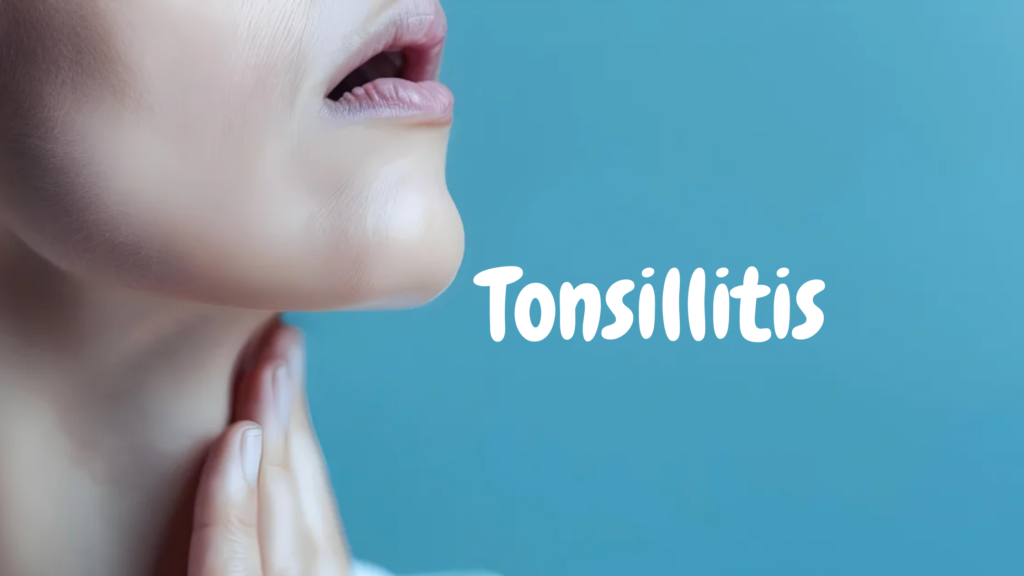👄 Tonsillitis
Tonsillitis is the inflammation of the tonsils, the two oval-shaped tissues at the back of the throat. It is most common in children but can affect people of all ages.
🧬 Causes:
- Viral infections (most common):
- Cold viruses, influenza, Epstein-Barr virus (EBV), adenovirus
- Bacterial infections:
- Most commonly Group A Streptococcus (causes strep throat)
- Others: Mycoplasma, Neisseria, Haemophilus
🩺 Symptoms:
- Sore throat
- Red, swollen tonsils
- White or yellow coating or patches on tonsils
- Painful swallowing
- Fever
- Swollen lymph nodes in the neck
- Bad breath
- Headache or ear pain
- Voice changes (muffled or “thick” voice)
- In viral cases: cough, runny nose, hoarseness
Severe cases may cause difficulty breathing or swallowing.
🔍 Diagnosis:
- Physical exam of the throat
- Throat swab to test for strep (rapid test and/or culture)
- Blood tests (in suspected mono or other viral causes)
💊 Treatment:
🦠 Viral Tonsillitis:
- Self-limiting; resolves in 5–10 days
- Rest, fluids, warm saltwater gargles
- Pain relievers: acetaminophen or ibuprofen
🧫 Bacterial Tonsillitis:
- Antibiotics (usually penicillin or amoxicillin)
- Finish full course to prevent complications
⚠️ Complications:
- Peritonsillar abscess (pus beside the tonsil)
- Rheumatic fever (from untreated strep)
- Glomerulonephritis (kidney inflammation)
- Chronic tonsillitis or recurrent infections
🔪 When Is Tonsillectomy Considered?
- Recurrent tonsillitis (e.g., >7 episodes/year)
- Chronic or severe symptoms despite treatment
- Obstructive sleep apnea from enlarged tonsils
- Repeated peritonsillar abscesses
